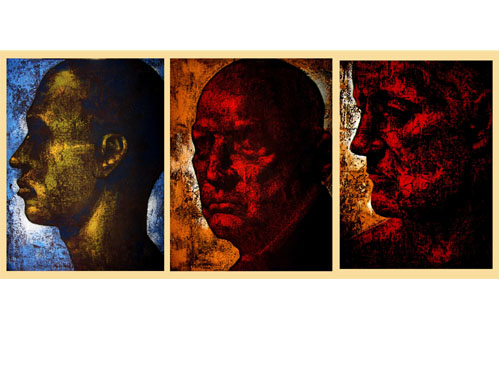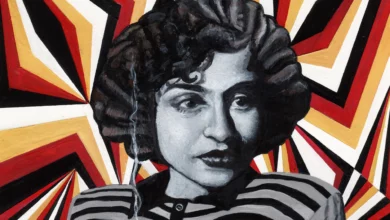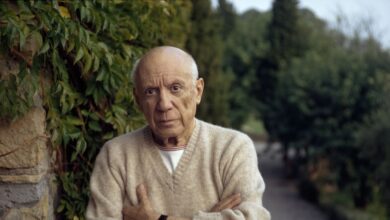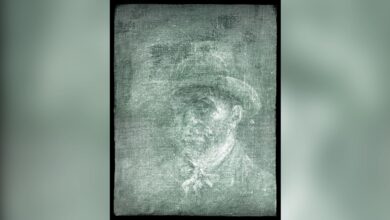
Internationally acclaimed Cairene artist Kareem El Qurity is exhibiting a series of mixed-media portraits under the moniker “Passing Faces” at Al Masar Gallery in Zamalek.
Stepping into one of the gallery’s brightly lit, modern and uplifting rooms, visitors are instantly greeted by a mob of portraits of desolate characters. They look like they are somewhere in between dead men and sci-fi aliens.
It is immediately clear that these characters are not happy. And, eerily, it somehow feels as if viewers might be the reason.
Face after face, the portraits are either angrily staring you down or seemingly too ashamed or bothered to even look at you. Such feelings lead one to realize that 28-year-old Qurity has an astonishing talent for capturing facial expressions with a remarkable degree of accuracy.
Also, since most of the paintings are in contrasting but dark, bold colors — blacks, whites, grays and browns — and none of the characters have any hair, clothing or remarkable features, viewers are somewhat forced to focus primarily on their nuanced facial expressions.
But, a few rounds into the exhibition, thoughts about who these characters might be start to arise. The majority of them look rather alien, yet the expressions are remarkably familiar.
The exhibition flyer put together by Al Masar Gallery says Qurity sketches characters he sees on the streets and then later turns them into larger paintings to give them a voice. However, speaking to Qurity, the artist says this is not exactly true.
“Obviously, as an artist I aim to be observant and I am affected by the sad faces I see on the bus and sitting on the streets,” he says. “But most of the characters and facial expressions [shown in the exhibition] are a mixture of my imagination and perhaps the feeling I get off people on the street.”
Qurity adds that this experiment in exploring and mastering nuanced facial expressions is an attempt to broaden his artistic palette and break into the world of creating still-motion animation videos.
“Eventually, I will settle on a series of nuanced facial expressions, and use still motion video to show that even the smallest movements in one’s lips or nose say a lot more than we realize, once you remove all the distractions, like clothing and street noise,” he explains.
Qurity says more exhibits like this will pop up over the coming few years.
However, not all of the pieces shown as part of the “Passing Faces” exhibition are examples of nuanced facial expressions.
One beautiful piece titled “Polarization” shows a cast of small, featureless characters, roaming around each other doing apparently contrasting tasks. For example, one man in the piece has his head on the ground praying on a carpet, while next to him another stands aloof, seemingly facing the opposite direction.
Others seem to be busy talking on mobile phones like they are late for an important date, while some right next to them — either naked or in galabeyas — blankly stare into space.
Overall, “Passing Faces” does not include many works, although it does feature a couple of older pieces from Qurity’s past exhibits. For instance, visitors see the tetraptych showing four army generals — one wearing a military beret — from December 2010’s “People & the Constitution” exhibit, with political platitudes engraved in Arabic all around them.
Qurity says Al Masar Gallery chose to add the older pieces. However, they fit in remarkably well with the miserable “Passing Faces” characters, given that a month after Qurity’s aforementioned exhibition, the 25 January revolution started, Hosni Mubarak gave a series of platitudes on TV, and then eventually handed the country over to the Supreme Council of the Armed Forces.
Older pieces aside, “Passing Faces” is further proof that Qurity — a two-time winner of the Cairo Youth Art Salon who exhibits widely on the international art scene — is a brilliant talent and definitely worth checking out.
“Passing Faces” is at Al Masar Gallery, 157B 26th of July St., Zamalek, Cairo, until 11 April.




